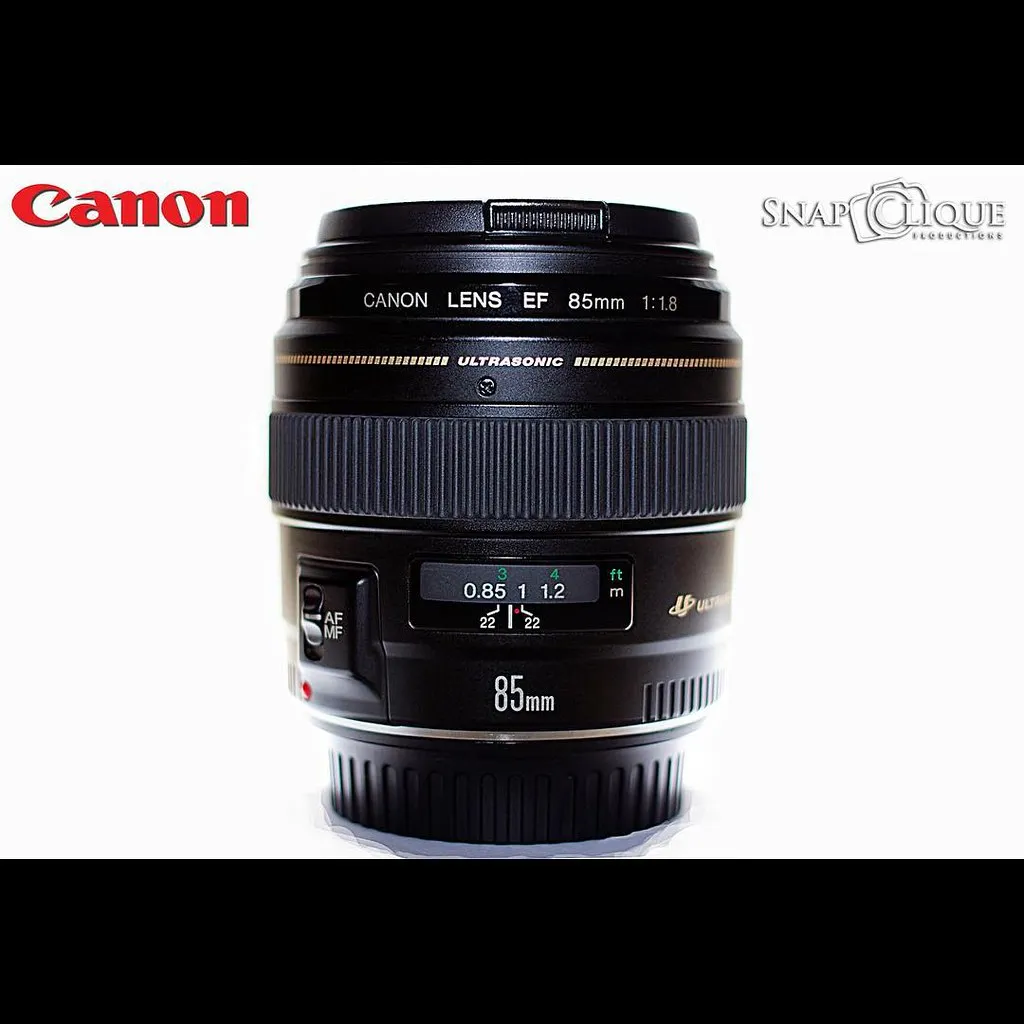
The Canon 85mm F/1.8 is the company’s budget level portrait lens, and a heck of a lens at that. Touted by photographers, Flickr groups, and reviewers as one of the best bang for your buck options; the 85mm is a lens that most people should at least consider. I’ve been shooting with this lens for over a year but never decided to do a full field review for the reason that it’s not new. However, this single long review will encompass some of the work that I’ve done throughout my various postings on this site, and we’ll help you determine whether or not it’s for you.
The Canon 85mm F/1.8 lens is a fairly small lens that feels very good in the hand and that will make most Canon users feel right at home. On the lens is a distance scale, focusing ring and MF/AF switch. When mounted on any camera, I usually don’t have my entire hand cupping the lens unless the lens hood is attached. Instead, my index finger and thumb are wrapped around the focusing ring or around the lens itself.
A small peeve about the lens is the relatively small MF/AF switch. However, it is actually in a very good place because your thumb will intuitively be able to quickly make the correct setting change if needed.
Users with small hands will feel right at home with this lens and users of the nifty fifty (Canon 50mm F/1.8) will feel like this is the lens they dreamed about. The reason why is because many of these users crave small lenses with USM (so they can override the focusing manually) and for a lens with an accurate distance scale and larger/smoother focusing ring. The lens is small enough that it can stay attached to my cameras and be placed into a bag like the M-Classics Compact.
The Canon 85mm F/1.8‘s build quality is fairly solid. For its price point, one really can’t complain. It feels a bit more solid than the Canon 50mm F/1.4, much more solid than the 50mm F/1.8, not as solid as the 35mm F/1.4 L, and more solid than the Canon 100mm F/2.8 Macro lens. The build quality will adequately suit the needs of many studio photographers, portrait photographers, pet photographers, wedding photographers, event photographers, and landscape photographers (if they feel they want that focal length).
Though its nowhere near as solid as the Canon 85mm F/1.2 L II, it has some significant advantages over it and I wouldn’t trade mine for the F/1.2 L version even if you gave it to me for free (no…really). The F/1.8 is:
– significantly smaller
– significantly quieter to focus (and faster)
– significantly lighter and feels very balanced on all cameras I’ve tested
– less likely to be bumped by someone because of the smaller size. And if someone does happen to hit it, they’re more likely to hit the camera body or the large lens hood.
That speedy focusing is also extremely quiet and often very accurate. It won’t hunt in dim light like the 50mm F/1.4 or the 50mm F/1.8.
So who needs lenses that fast?
– Wedding photographers who are working with all primes and using the 85 for portraits or candids during the ceremony or reception.
– Portrait photographers working in a studio with strobes that do not have modeling lights.
– Photojournalists that just need the speed.
– Sports photographers, but in all honesty you need a longer lens even on an APS-C body.
– Concert photographers that have subjects that move around like crazy.
– Mom-arazzis that love to take photos of their kids running around. This is the perfect lens for you to catch the cub scouts frolicking around.
– Pet photographers that want to keep their distance from the animal a bit.
When shooting weddings, the focal length is great for candid photography, portraits, and because of the fast F/1.8 aperture I can get a better exposure from my flashes.
For concert photography, the 35mm F/1.4 L and 85mm F/1.8 are all that are in my camera bag with my 7D because of just how fast they focus and how well they work together.
For portraits, the F/1.8 aperture lets me shoot wide open and only focus on the subjects eyes. The lens is fairly sharp wide open, but really starts to become super sharp between F/2.8-F/5.6. The F/1.8 aperture will also allow you to shoot photos with a razor thin depth of field with acceptable sharpness wide open.
I recommend this lens for anyone with just a small budget or anyone who can only afford one lens in their camera bag!!